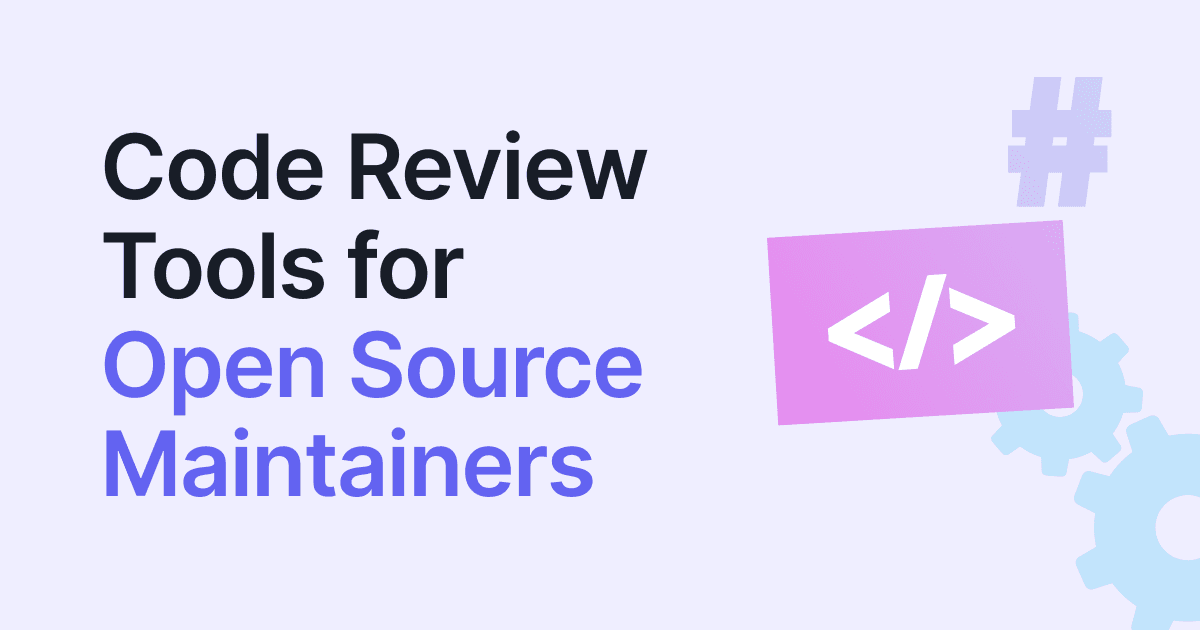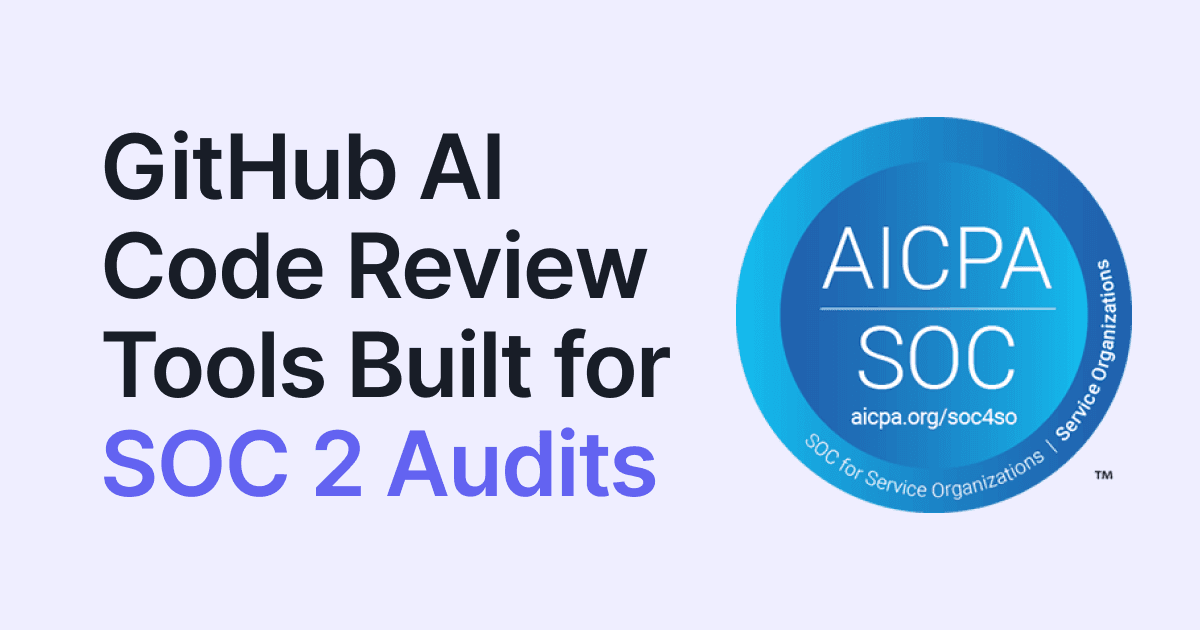AI Code Review
Sep 22, 2025
AI Code Review: Self vs Peer - What Works

Amartya Jha
Founder & CEO, CodeAnt AI
The old rule was simple: never review your own code. Get fresh eyes on it. Catch the mistakes you can't see. That made sense when every line came from your brain, typed character by character. But AI changes everything.
With Copilot, ChatGPT and junior devs shipping code they didn’t fully write, the traditional code review process is under strain now.
We are now caught between old wisdom and new reality. Should you review AI-generated code? And if you're already doing it, are you doing it right?
This guide will help you with that shift. Here you will learn:
How traditional code review rules evolved
What dev teams are actually doing
When you should(and shouldn’t) review your own AI Code
How to implement AI code review without breaking your workflow
Whether you're using AI coding assistants, dealing with AI-generated pull requests, or trying to set review standards for your team, this guide shows you what works in the real world.
The Traditional Code Review Rules (And Why They're Breaking Down)
Why have we never reviewed our own code before? The "don't review your own code" rule exists for solid reasons. When you write code, you're in problem-solving mode. You know what you're trying to accomplish, you understand the shortcuts you took, and you fill in the gaps automatically.
You read what you meant to write, not what you actually wrote.
That missing null check? You don't see it because you know the variable should never be null.
That typo in the variable name? Your brain autocorrects it while reading.
Fresh eyes catch these problems because they don't have your context. A reviewer sees your code for what it is, not what you intended it to be. They ask questions like "why did you choose this approach?" or "what happens if this API call fails?" Questions you might skip because the answers seem obvious to you.
The social aspect matters too. Code review creates accountability. When someone else has to approve your work, you naturally write cleaner code. You add better comments. You think twice before taking shortcuts.
This is when with the help of AI the "author" becomes murky
AI coding assistants break these assumptions in weird ways.
When GitHub Copilot writes a function for you, are you really the author? You prompted it, tweaked the output, maybe fixed a bug or two. But you didn't think through every line.
The speed mismatch creates another problem. You can read and understand code at maybe 50-100 lines per minute when you're being thorough. AI can generate 200 lines in seconds. The review process becomes a bottleneck in ways it never was before.
Then there's the responsibility gap. If AI-generated code breaks something in production, who's accountable? The developer who merged it? The AI that wrote it? The team that chose to use AI in the first place?
Traditional code review assumed the author understood their code completely. That assumption doesn't hold when part of your codebase comes from statistical models trained on millions of code examples.
What the Developer Community Is Actually Doing with AI Code Reviews
The AI code review debate isn't theoretical anymore. Teams are making real decisions about this right now, and the results are all over the map.
The current landscape: Three camps emerge
The "Absolutely Not" Camp | The "Why Not?" Camp | The "It's Complicated" Camp |
Core belief: If you can't explain every line, don't ship it | Core belief: Same AI, fresh context = fresh perspective | Core belief: Context matters more than rules |
Typical response: "AI slop over the wall" | Typical response: "Better than no review at all" | Typical response: "Depends on the situation" |
Team size: Often smaller, senior-heavy teams | Team size: Fast-moving startups, solo developers | Team size: Enterprise teams with mixed experience |
Main concern: Quality degradation | Main concern: Review bottlenecks | Main concern: Balancing speed with safety |
What teams are actually experiencing?
The speed trap: Most developers report the same pattern: AI generates code faster than humans can meaningfully review it. One senior engineer put it bluntly: "I can review code at the speed I think and type, not at the speed ChatGPT generates it."
The false confidence problem: Junior developers especially struggle with AI code reviews. They see the AI found "issues" and assume everything else is fine. Meanwhile, the AI might miss architectural problems that would be obvious to an experienced reviewer.
The tool multiplication issue: Teams using AI for code generation often end up with more tools, not fewer:
AI for writing code (Copilot, Cursor)
AI for reviewing code (CodeAnt.ai, DeepCode)
Traditional static analysis (SonarQube, ESLint)
Human reviewers for business logic
Security scanning for vulnerabilities
Real implementation patterns that work
Pattern 1: The staged approach

Teams using this report ~40-60% reduction in back-and-forth review cycles.
Pattern 2: The division of labor
AI handles syntax, style, obvious bugs
Humans handle architecture, business logic, edge cases
Clear handoff points between AI and human review
Pattern 3: The confidence scoring system, Some teams only allow AI self-review when:
Code changes are under 50 lines
Tests pass, and coverage doesn't drop
No security-sensitive areas touched
AI reviewer confidence score above threshold
The accountability question nobody wants to answer
When AI-reviewed code breaks in production, teams handle blame differently:
Option A: Developer owns everything "Your name on the commit means you're responsible for understanding every line."
Option B: Shared responsibility "AI is a tool like any other. We don't blame the compiler when code fails."
Option C: Process accountability "If our review process approved it, the process failed, not the individual."
Most teams haven't explicitly chosen an approach yet. They're figuring it out case by case, which creates inconsistency and stress.
When You Should (and Shouldn't) Review Your Own AI Code
Here's the straight answer everyone's dancing around: it depends on what the AI actually generated and how confident you are in understanding it.
Self-review works when you stay in control
Small, predictable changes You asked AI to refactor a function, add error handling, or write tests. You can see exactly what changed and why. The logic makes sense to you.
Familiar territory The AI used patterns and libraries you know well. Nothing exotic, nothing that makes you think "I have no idea how this works."
Low blast radius If this code breaks, it doesn't take down the payment system or leak user data. Internal tools, documentation updates, non-critical features.
Get human eyes when things get serious
Security and compliance code: Authentication flows, data encryption, user permissions. One mistake here can cost your company millions. Don't trust AI alone with this stuff.
Architecture decisions: AI suggested a new design pattern, different database approach, or major refactoring. These decisions affect your entire team for months.
Complex business logic: The code implements rules that took three meetings to define. AI might get the syntax right but miss the edge cases that matter to your customers.
The reality check process
When you do review your own AI code, ask yourself these questions:
Can I explain this code to a junior developer right now? If you're stumbling through the explanation, get another reviewer.
Would I bet my next performance review on this code working correctly? If not, why are you merging it?
Does this solve the actual problem or just the problem I described to the AI? Sometimes AI gives you what you asked for, not what you needed.
How we @ CodeAnt.ai are changing the game
The old self-review vs peer review debate assumes you're working alone. Modern AI review platforms flip that assumption.
CodeAnt.ai automatically catches the security vulnerabilities, style issues, and code quality problems that human reviewers often miss. It understands your codebase context and flags issues specific to your setup.
This means self-review becomes less about catching bugs and more about validating business logic and architectural decisions. The AI handles the mechanical scanning while you focus on whether the code actually solves the right problem.
The question isn't whether you should review your own code. It's whether you're using the right tools to make that review actually effective.
How to Implement AI Code Review Without Breaking Your Workflow
Most teams mess this up by trying to replace everything at once. The smart approach is adding AI review alongside your existing process, then gradually shifting responsibilities as you build confidence.
Week 1: Connect and observe
Set up the integration (takes 5 minutes)
For GitHub users, simply install the CodeAnt AI app from the marketplace. The necessary webhooks configure automatically. From the next pull request onwards, CodeAnt AI reviews every PR.
Bitbucket works identically - one-click install, automatic webhook setup. GitLab requires two webhook URLs but the setup takes under 5 minutes following their documentation.
Configure your first scan settings
https://docs.codeant.ai/setup/gitlab/self-hosted/pull_request
https://docs.codeant.ai/setup/azure_devops/self-hosted/pull_request>
CodeAnt.ai begins scanning immediately but you control which issues can block merges. Start conservative:
Enable secret detection - This catches API keys, tokens, and credentials with minimal false positives
Turn on basic SAST scanning - Detects common vulnerabilities like SQL injection and XSS
Activate code quality checks - Flags duplicate code, unused variables, and complexity issues
Watch what it catches on real PRs

On every pull request, CodeAnt AI automatically:
Summarizes what changed in plain English
Provides one-click fixes for style and quality issues
Detects security vulnerabilities with severity ratings
Scans infrastructure code for misconfigurations
Flags any secrets or credentials in the diff
Week 2: Fine-tune for your codebase
Customize security rules for your tech stack
The default settings work for most teams, but you can tune sensitivity:
Database security: If you use an ORM exclusively, reduce SQL injection sensitivity
Frontend frameworks: Adjust XSS detection based on your framework's built-in protections
API security: Add patterns for your organization's internal API key formats
Infrastructure: Configure cloud-specific rules for AWS, GCP, or Azure
Set up custom coding standards

This is where CodeAnt.ai shines. Instead of writing complex YAML configurations, define rules in plain English:
"All database queries must use prepared statements"
"Functions longer than 50 lines need documentation"
"API endpoints require authentication middleware"
"No hardcoded URLs in production code"
Start consolidating your tool stack
Most teams juggle 4-5 separate tools. Begin replacing redundant ones:
Replace standalone secret scanners (1Password Secret Scanning, GitGuardian)
Consolidate SAST tools (replace or reduce SonarQube, Veracode scans)
Merge security reporting dashboards into CodeAnt.ai's unified view
Week 3: Enable enforcement and automation
Configure merge blocking for critical issues

Set up quality gates that prevent risky code from reaching main:
Block PRs with exposed secrets - Zero tolerance for API keys, passwords, tokens
Stop critical security vulnerabilities - High-severity SAST findings require fixes
Enforce test coverage thresholds - PRs that drop coverage below your standard get blocked
Require documentation - Functions above complexity thresholds need docstrings
Establish the two-tier review process
Configure CodeAnt.ai to handle mechanical checks while routing complex decisions to humans:
AI handles automatically:
Security vulnerability detection
Code style and formatting
Performance anti-patterns
Documentation coverage
Secret scanning
Human reviewers focus on:
Architecture and design decisions
Complex business logic validation
New feature implementations
Performance-critical optimizations
Run bulk cleanup across your codebase
Use CodeAnt.ai's bulk fix capability to address technical debt systematically:
Fix up to 200 files in a single operation
Schedule runs during low-activity periods (weekends, off-hours)
Start with low-risk fixes: unused imports, code formatting, simple duplications
Progress to more complex issues: refactoring opportunities, security improvements
Week 4: Measure impact and scale
Track meaningful productivity metrics
CodeAnt.ai's dashboard automatically captures key performance indicators:

CodeAnt.ai automatically tracks:
PR throughput, review response time, and bottlenecks per engineer
Pull requests reviewed, issues caught, and suggestions by category
Security vulnerabilities, duplicate code, and documentation gaps
Repository-wide insights and review status across all projects
Generate compliance reports
Export detailed audit reports in PDF or CSV format:
Security posture summaries across all repositories
Compliance status against standards (SOC 2, HIPAA, ISO 27001)
Trend analysis showing improvement or regression over time
Repository-specific quality and security scorecards
Scale across your entire organization
Roll out to additional teams and repositories:
Standardize configurations - Apply successful rule sets to new repositories
Create team-specific dashboards - Different views for platform teams, security, and engineering managers
Establish organization-wide policies - Consistent standards across all codebases
Train new team members - Use CodeAnt.ai feedback as learning opportunities
Enterprise considerations
Data security and compliance
CodeAnt.ai maintains SOC 2 compliance with zero data retention guarantees. Your code never gets stored on external servers or used for training other models.
For organizations with strict security requirements, CodeAnt.ai Enterprise deploys entirely on-premises or in your Virtual Private Cloud (VPC).
Multi-cloud infrastructure monitoring
Current support includes AWS, with GCP and Azure coming soon. The cloud security posture management continuously monitors infrastructure for:
Security misconfigurations across cloud resources
Compliance violations against industry standards
Infrastructure drift from approved configurations
Common implementation mistakes to avoid
Over-configuring on day one: Start with default settings and adjust based on actual team feedback. Spending weeks perfecting configurations before seeing real results creates analysis paralysis.
Ignoring the human element: CodeAnt.ai handles mechanical scanning brilliantly, but human judgment remains essential for architectural decisions and business logic validation. Don't try to automate everything.
Skipping team training: The biggest implementation failures happen when teams don't understand what the AI checks for or why certain suggestions matter. Invest time in explaining the reasoning behind rules.
Forgetting to measure success: Track metrics that matter to your organization - whether that's faster delivery, fewer production bugs, or improved security posture. Use data to justify continued investment.
The goal isn't to eliminate human review entirely.
CodeAnt.ai works best when it handles what it excels at (security scanning, code quality, consistency enforcement) while humans focus on what requires creativity and judgment (architecture, business logic, user experience design). This division of labor makes both AI and human review more effective.
AI Code Review: The End of Waiting for Feedback
For years, code review meant waiting.
Waiting for someone to get around to your PR.
Waiting while context switches kill your momentum.
Waiting while obvious bugs slip through because reviewers are rushing through their queue.
AI code review changes that completely.
Modern AI code review tools don't just catch syntax errors, they understand your codebase, spot security vulnerabilities, flag performance issues, and provide instant feedback that's actually useful.
No more days-long review cycles. No more "looks good to me".
Teams using AI code review ship 50% faster while catching more bugs than manual reviews ever could. Security issues get stopped before they reach production. Developers spend time building instead of waiting for feedback that may never come.
Ready to stop waiting for code review feedback? Experience how AI code review transforms your development workflow and code quality.
Get started with a 14-day free trial today @ CodeAnt.ai Today.













